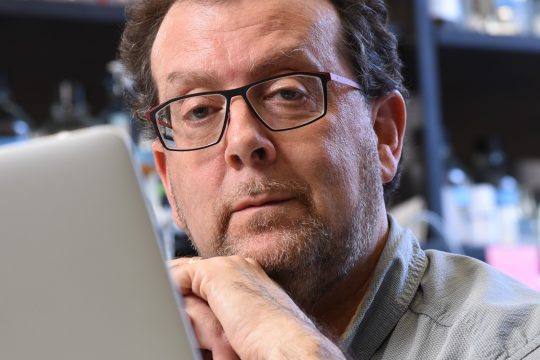Understanding how the information in the genome is utilized is one of the central questions in modern biology. It has become clear that a critical level of gene regulation occurs through the chemical modification of both the DNA itself...
The goal of my research program is to answer a fundamental biological question: how is the genome properly interpreted to coordinate the diversity of cell types observed during neuronal development? We are focused on the acquisition of specific cellular...
Our laboratory studies the basic molecular mechanisms of programmed cell death, an evolutionarily conserved process to eliminate cells. Because these pathways normally contribute to the millions of cell deaths that occur per day per individual, defects in cell death...
Our research is focused on understanding how neuronal connectivity is established during development. Our work investigates the function of extrinsic guidance cues and their receptors on axonal guidance, dendritic morphology, and synapse formation and function. For several years we...
Our laboratory is interested in the area of sensory transduction: specifically visual and olfactory transductions, which are the processes by which the senses of vision and olfaction are initiated. These two processes have interesting similarities and differences. Vision can...
The research group is a laboratory focused on medicinal chemistry, primarily addressing diseases of neurodevelopment such as schizophrenia. Biological activity and structure-based drug design are used to drive chemistry target selection, and we are developing synthetic methods to efficiently prepare...
The vertebrate central nervous system (CNS) is an amazingly complex structure composed of distinct subtypes of neurons and glia. Our lab aims to identify the molecular mechanisms that control the generation of the major cell types of the vertebrate...
Our research takes a bottom-up approach to understanding how the neural circuits of this massively interconnected network of neurons are functionally organized and how dysfunction in these circuits contributes to neurodegenerative diseases like amyotrophic lateral sclerosis and neuropsychiatric disorders...
Our laboratory studies the molecular and cellular mechanisms underlying the perception of pain under healthy conditions and in the setting of pathology. Towards this goal, we utilize a wide spectrum of approaches including behavioral analysis, in vivo and in...
Auditory hair cells, located in the inner ear cochlea are critical for our ability to detect sound. In mammals, neural innervated hair cells come in two flavors: inner hair cells, which are our primary mechanoreceptor and relay sound information...










